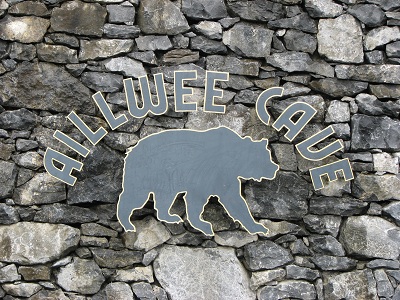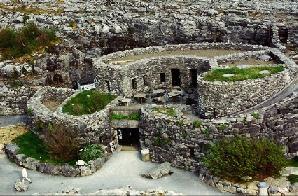Aillwee Cave EarthCache
-
Difficulty:
-

-
Terrain:
-

Size:  (not chosen)
(not chosen)
Related Web Page
Please note Use of geocaching.com services is subject to the terms and conditions
in our disclaimer.

In the heart of the Burren, lies one of the oldest caves in Ireland.
This cave was formed by the glacial melt waters of an early ice age. The erosive power of the waters carved out an subterrainian river deep underneath Aillwee mountain. This river has subsided since the last ice age, leaving behind one of Ireland's most stunning caves.
Aillwee Cave is open all year round. Tour times are as follows:
10:00 to 17:30 every day of the week.
10:00 to 18:30 during July and August.
Please note, for safety reasons:
No pets are allowed in the cave (except guide dogs).
Children must have a parent or gaurdian with them at all times on the tour.
All facilities are wheelchair accessible except for the Cave.
No advance booking needed, pay by cash or cheque on arrival.
Cave tours during end of November and all of December by appointment only
Description
The cave system consists of over a kilometer of passages leading into the heart of the mountain. Its features include an underground river and a waterfall as well as some large stalactites and stalagmites. The remains of bears can also be seen inside the caves and allusions have been made to it being the last bear den in Ireland. Roughly 300 meters of cave passage is open to the public, one third of the total length of the cave. The tours end at a point called the highway and exit the cave via a 250 meter manmade tunnel. The cave is typical of the Clare caves, consisting in the main of stream passage and ending in a sump. The general direction is east-west but turns due south some 600 meters into the cave.
The cave is considerably older than most of the Clare caves and originally contained a large stream. The cave is now largely deserted of the stream and is heavily backfilled with glacial infill. The formations visible on the show cave tour are rarely more than 8000 years old but calcite samples in the recesses of the cave have been dated to over 350,000 years old.


Discovery and exploration
It was discovered in 1944, when a farmer named Jacko McGann followed his dog who was chasing a rabbit. The farmer did not explore very far into the caves, and did not tell anyone of the find for nearly 30 years. He told cavers of the cave in 1973 and that summer the cave was explored as far as a boulder choke. Show cave development began quite soon after. The boulder choke was removed in 1977 and access was gained to the rest of the cave. The Marine Blast tunnel was completed in 1992 to allow a circular trip.
Stalactite A stalactite ("to drip" and meaning "that which drips") is a type of speleothem (secondary mineral) that hangs from the ceiling of limestone caves. It is a type of dripstone.
Stalactites are formed by the deposition of calcium carbonate and other minerals, which is precipitated from mineralized water solutions. Limestone is calcium carbonate rock which is dissolved by water that contains carbon dioxide, forming a calcium bicarbonate solution.
Every stalactite begins with a single mineral-laden drop of water. When the drop falls, it leaves behind the thinnest ring of calcite. Each subsequent drop that forms and falls deposits another calcite ring. Eventually, these rings form a very narrow (0.5 mm), hollow tube commonly known as a "soda straw" stalactite. Soda straws can grow quite long, but are very fragile. If they become plugged by debris, water begins flowing over the outside, depositing more calcite and creating the more familiar cone-shaped stalactite. The same water drops that fall from the tip of a stalactite deposit more calcite on the floor below, eventually resulting in a rounded or cone-shaped stalagmite. Unlike stalactites, stalagmites never start out as hollow "soda straws." Given enough time, these formations can meet and fuse to create columns.
Stalagmite
A stalagmite ("drop" or "drip") is a type of speleothem that rises from the floor of a limestone cave due to the dripping of mineralized solutions and the deposition of calcium carbonate. The corresponding formation on the ceiling of a cave is known as a stalactite. If these formations grow together, the result is known as a column.
Stalagmite should normally not be touched: Since the rock build up is formed by minerals solidifying out of the water solution onto the old surface, skin oils can disturb where the mineral water will cling, thus affecting the growth of the formation. Oils and dirt from the hands can also stain the formation and change its colour permanently.
Stalagtites and stalagmites are similar to travertine in the way they form and in their composition, but there are differences.
For further information about the Aillwee Cave please visit: www.aillweecave.ie
To log your visit:
After sending me the answers to the following questions, you do not need to wait for permission to log this EarthCache!
When I review you answers and there is a problem/mistake, I contact You to resolve it.
1. Of which kind of stone is the Aillwee Cave?
2. Explain the differences between stalagtites and stalagmites.
3. Estimate the height and width of the cave opening, and the average length of the stalactites you see (without touching them, of course)
The following is optional and NOT a requirement to log your visit:
Photos from your visit are very welcome with your log. Feel free to upload any photos you take during your visit. :o)
I hope you enjoy this EarthCache!
Have fun,
Lutz!


For Teachers:
- EarthCaching — An Educator's Guide
Use this FREE teachers guide to introduce EarthCaching to your students. Learn how to create your own EarthCaches, direct students to creat EarthCaches or use exisiting EarthCaches in your classroom. Download the whole document, or by sections.
- EarthCache Educator's Resource Kit
This resource kit provides you with materials to assist you in introducing EarthCaching into your classroom.

Additional Hints
(No hints available.)